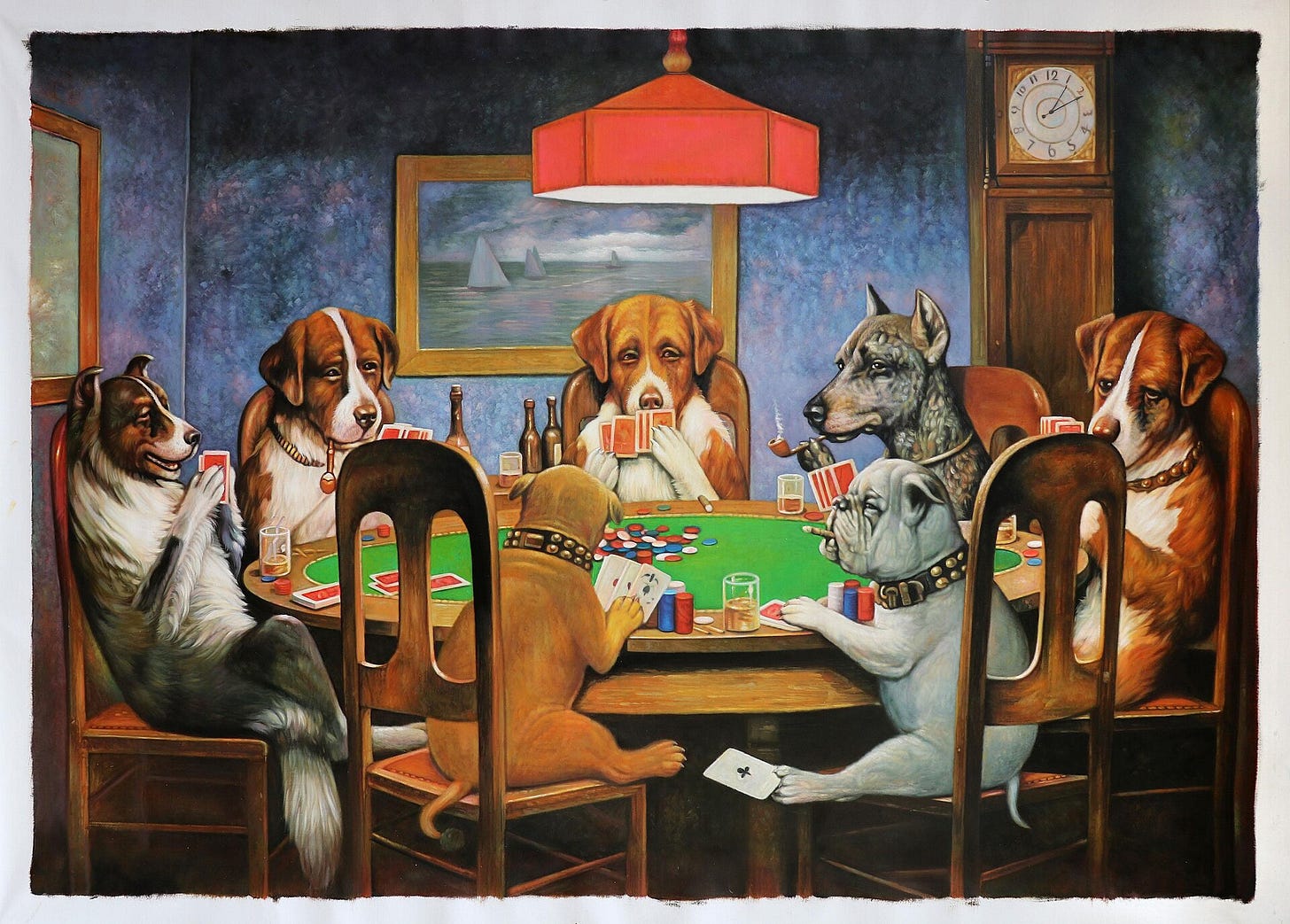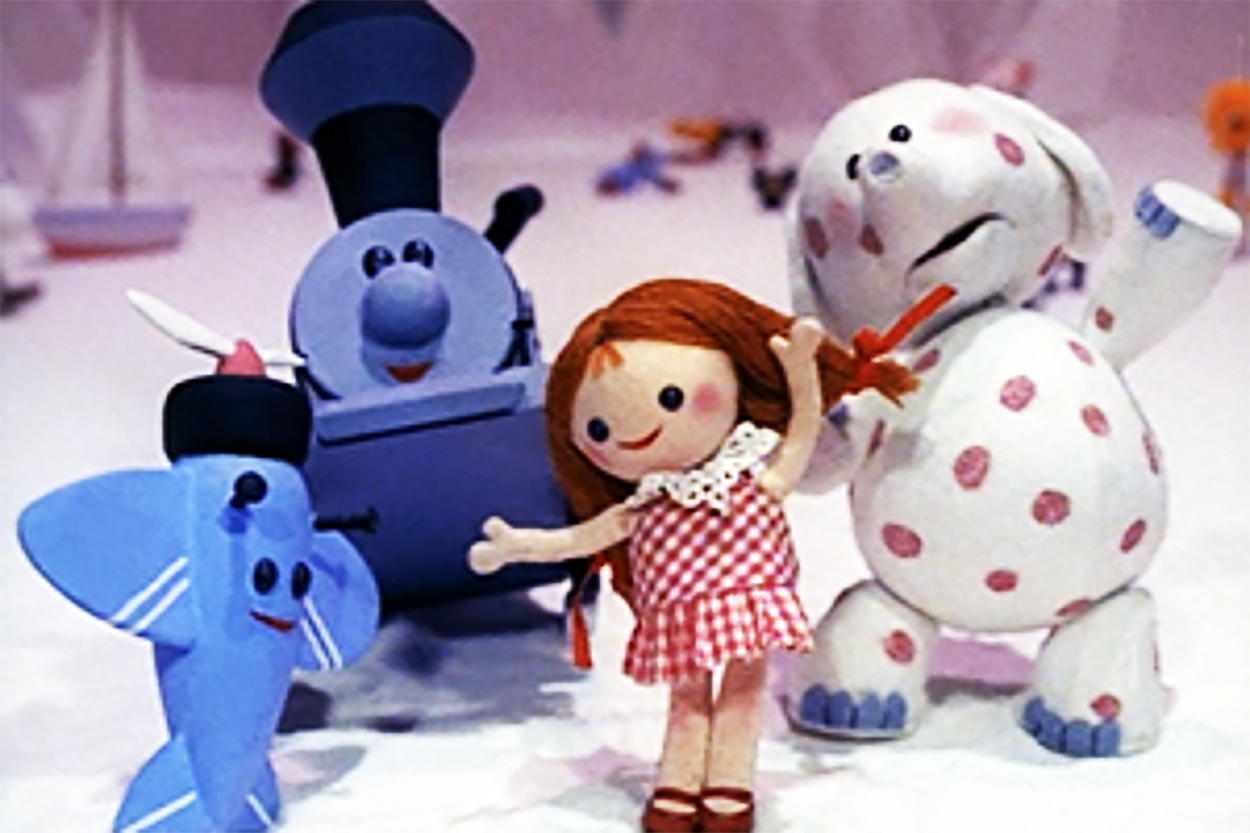If you’re seeing this newsletter for the first time, welcome! If you want to get off this list, just click “unsubscribe” at the bottom of this message. If you’re not already subscribed, you can sign up for free to receive new (short!) posts every couple of weeks.
“What’s it like to write a novel?” a non-writer friend asked me recently. “I’ll bet it’s fun.” After I finished laughing, I told her it’s like this: Say you have a 1000-piece puzzle to put together. Only you’re doing it blindfolded. Some pieces are missing, and there are extra pieces that don’t fit. You saw the picture on the box before they blindfolded you. You think it’s a basket of yarn with kittens. Only really, that wasn’t the picture at all. It was dogs playing poker all along, but they don’t tell you that until you’re halfway through.

“Who’s ‘they’?” my friend interrupted.
“Good question,” I replied. “Mostly my imagination. And the characters I invented and turned loose in the world. They get kind of…bossy.” I hesitated because there was a look of concern on her face.
“Anyway, it’s complicated,” I continued. “You fill in the edges first, put a little frame around the story. Then, just as you think you’re getting the hang of it, someone spills coffee on one corner of the puzzle, and you have to throw that part away.” I sounded like a lunatic, but I know my writer friends understand. Because eventually those pieces click, and the images start to appear, and there’s a story arc, a theme, three-dimensional characters.
“Writing is like driving at night in the fog. You can only see as far as your headlights, but you can make the whole trip that way.” —E.L. Doctorow
I’m in what I hope is the home stretch of the millionth revision of my second novel. There are still some pieces missing, and a graveyard of beautiful sentences, plot bridges to nowhere, and—worst of all—snuffed out characters. R.I.P.: Enzo the hot handyman, Ellie the rookie nurse, and Carl the Charity Hospital facilities manager. Jami Attenberg recently called one of her rejected characters “too good for this world,” which made me feel better. I take those leftover people, honor them, and put them in a (virtual) drawer, thinking maybe I’ll bring them back to life later. I won’t, but “isn’t it pretty to think so?” as Jake says to Brett in Hemingway’s The Sun Also Rises.
Someday, I’d love to crowdsource a story about everyone’s spare characters meeting up, like on the island of misfit toys in “Rudolph, the Red-Nosed Reindeer.” (Why is that doll on the island anyway?) What fun they’d have, getting up to all kinds of hijinks while waiting to be rescued. (WRITERS: let me know in the comments if you’d like to nominate one of your murdered darlings for residency on the island.)

Nothing makes me happier than when I’m speaking to a book club and people start arguing about the actions and motivations of my characters. Usually, I stand back and let it roll for a while, eventually reminding them it’s fiction. The puzzle will be what it’s supposed to be, and we hope our readers will be gentle with our characters. If we’ve done our job properly, they will feel as real to you as they do to us.




Loved this little peek inside a writer's brain! Also loved the puzzle analogy. Since I am a big fan of the old Rudolph movie, I can tell you that the doll is there because she has no nose. :)
I laughed out loud at the part about someone spilling coffee on the puzzle and having to discard something you created and thought was important. Same is true with memoir. Just because a "character" had a role in your life doesn't mean you need to include them to tell a particular story from your life. If something or someone doesn't move the story forward then yes, put them in the outtakes folder. I have several bad boyfriends whom I've exited to the virtual island of misfits. They'll probably misbehave there, too.